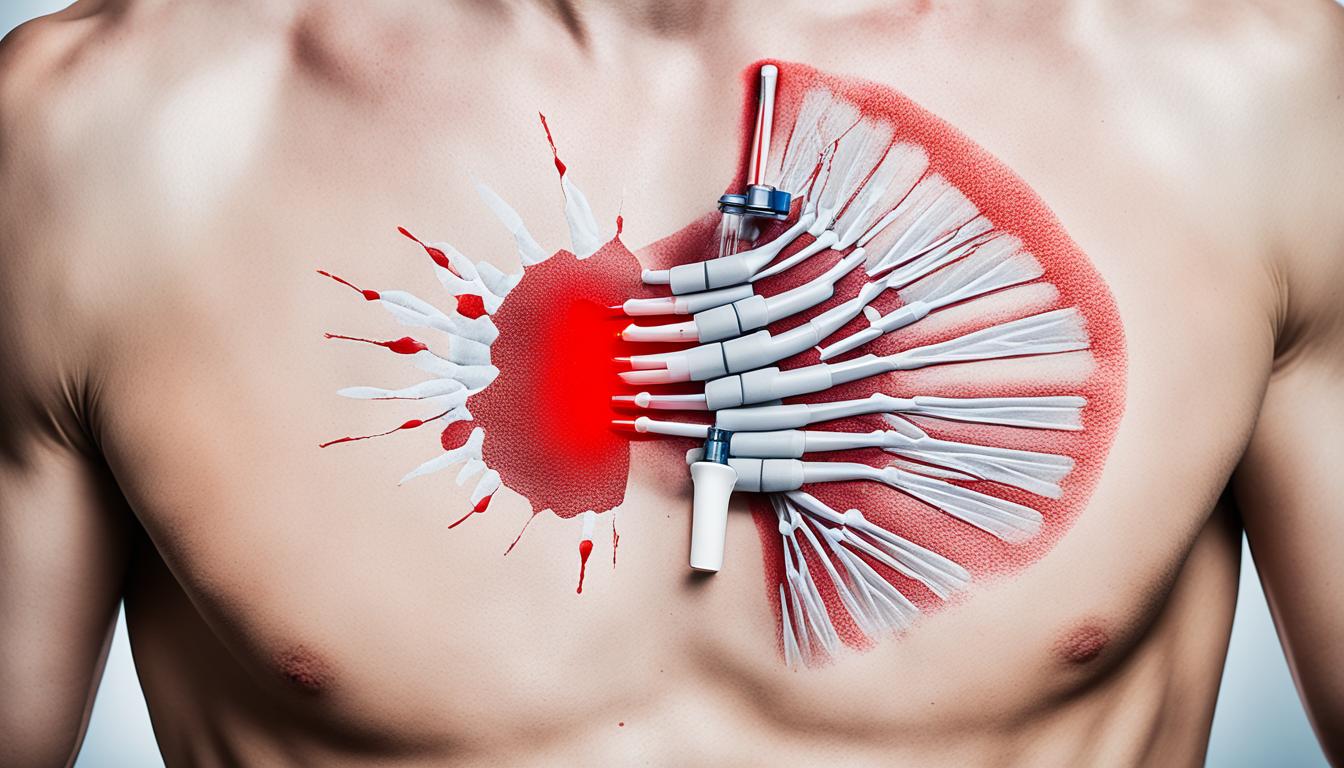A broken collarbone, known as a clavicle fracture, is often seen in falls, sports hits, or car crashes. The collarbone links the shoulder to the chest’s upper part. When it breaks, serious pain and movement problems follow.
Typical signs are swelling, pain, bruising, and hard shoulder movement. Sometimes, a lump near the shoulder may show up. If after a blow you notice these signs, seek medical help right away.
Diagnosing a clavicle fracture starts with a check-up by a doctor. They look for pain, swelling, and changes in the area. X-rays or CT scans might be needed too, to see the damage and any other injuries.
For many, mild breaks heal on their own with the arm in a sling or brace. They use rest, ice, and pain relief meds to feel better. Later, physical therapy helps regain movement and strengthen the shoulder.
Sometimes, simple methods aren’t enough, and surgery is the answer. Surgeons put the broken pieces back together with metal plates, pins, or screws. This helps the bone heal correctly and become stable.
Stem cell therapy is a new way to treat broken collarbones and it looks promising. Stem cells can boost the body’s healing power and fast-track bone recovery. Although still in the early stages, studies are positive about this therapy for clavicle fractures.
Key Takeaways:
- A broken collarbone, or clavicle fracture, is a common injury that can result from a fall, sports injury, or car accident.
- Common symptoms of a broken collarbone include swelling, tenderness, bruising, and limited shoulder movement.
- Diagnosis of a clavicle fracture is typically done through a physical examination and imaging tests such as X-rays or CT scans.
- Treatment options for a broken collarbone may include conservative management with physical therapy or surgical intervention.
- Stem cell therapy shows promise in promoting healing and reducing recovery time for broken collarbones.
Symptoms and Diagnosis of a Broken Collarbone
A broken collarbone, known as a clavicle fracture, can show many symptoms. It’s crucial to diagnose it correctly for the best treatment. Knowing the signs and how it’s diagnosed helps patients and doctors plan the right care.
Symptoms of a Broken Collarbone
After a collarbone fracture, several symptoms might show:
- Swelling: The collarbone area can swell because of the injury.
- Tenderness: It might hurt to touch the affected area.
- Bruising: You could see bruises around the collarbone.
- Difficulty moving the shoulder: It can be hard to move the shoulder because it’s painful and movement is limited.
- Visible deformity or bulge: Sometimes, the shoulder might look deformed or bulging.
Knowing these symptoms is key to finding out if you have a fracture. It’s important to get medical help right away.
Diagnosis of a Broken Collarbone
Diagnosing a broken collarbone includes a physical check and imaging tests:
- Physical examination: The doctor will look at tenderness, swelling, broken skin, and if there are any deformities around the collarbone area.
- Imaging tests: Tests like x-rays and CT scans can see the fracture and any other damage. They give a lot of details on the break’s location and how bad it is.
Using these methods, doctors can pinpoint a broken collarbone and choose the best way to treat it.
| Diagnostic Methods for a Broken Collarbone | Advantages | Disadvantages |
|---|---|---|
| X-rays | Quick and readily available | May not show certain types of fractures |
| CT scans | Provides detailed images of the fracture | Higher radiation exposure |
Treatment Options for a Broken Collarbone
The care for a broken collarbone depends on how bad the fracture is and personal factors. Often, simple treatments work well. These include wearing a sling or brace to keep the shoulder still. Putting ice, taking medicine for pain, and resting help a lot too. Doing physical therapy can also make the shoulder feel less stiff and stronger.
If the break is severe or if the simple treatments don’t work, surgery might be needed. During surgery, doctors can use plates, pins, or screws to bring the bones back together and heal correctly. This surgery gives extra strength to the break and is done while the person is asleep.
There’s also a new way to treat a clavicle injury with stem cells. Stem cells can make the body heal faster by jump-starting the natural healing process. Even though using stem cells for this is still being studied, early findings look very promising. There’s a lot of hope that stem cell therapy will change how collarbone breaks are treated in the future.

